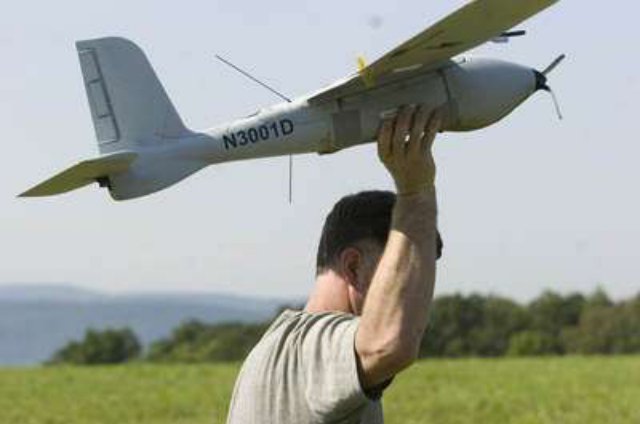 Members of Lockheed Martin Systems & Sensors team discussed the company’s 100-year history at a demonstration last week of the Desert Hawk at the company’s campus in Owego.
Members of Lockheed Martin Systems & Sensors team discussed the company’s 100-year history at a demonstration last week of the Desert Hawk at the company’s campus in Owego.
The 1.7-million-square-foot Owego facility, which employs 2,700 people, currently works on several projects, including the Joint Strike Fighter, A-10, Desert Hawk, MH-60, K-MAX, B-2, P-3 and C130, said Dan Spoor, Lockheed’s Owego general manager.
The Desert Hawk is a lightweight unmanned aircraft that can be carried in a backpack and used as a short-distance scout. Currently used by Britain in combat missions, the devices have definite benefits, giving anyone who uses them live video feed of an area.
“To them (soldiers), it makes a big difference,” technical director John Yuhnick said. “They will be able to make quick decisions without putting you in harm’s way. The value to us is more than technology.”
As one of several small unmanned aircraft systems that the company has developed, the Desert Hawk gives troops in the field the advantage of knowing what, or who, may be waiting ahead.
On Thursday, Dan Ladue, a test engineer, tossed a lightweight, grey object —like a paper airplane — into the sky, and it soon picked up to its cruising speed of 35 knots. The aircraft — which looks like a bird when it’s just 500 feet in the air — can get up to 50 knots and stay up for five hours, all on battery power, while someone controls it with a few keystrokes on a laptop from below.
Lockheed provided the demonstration of the 18-pound Desert Hawk high on a hill at the company’s sprawling 675-acre secure campus in a rare event reserved for media.
The Desert Hawk, with a body of foam covered by Kevlar and carbon fiber, can withstand hard landings in the rough terrain. They are able to break apart upon landing and are easy to piece back together, Yuhnick said.
“They can take a lot of damage,” he said. “They need that type of resiliency.”
Source: Press Contacts
